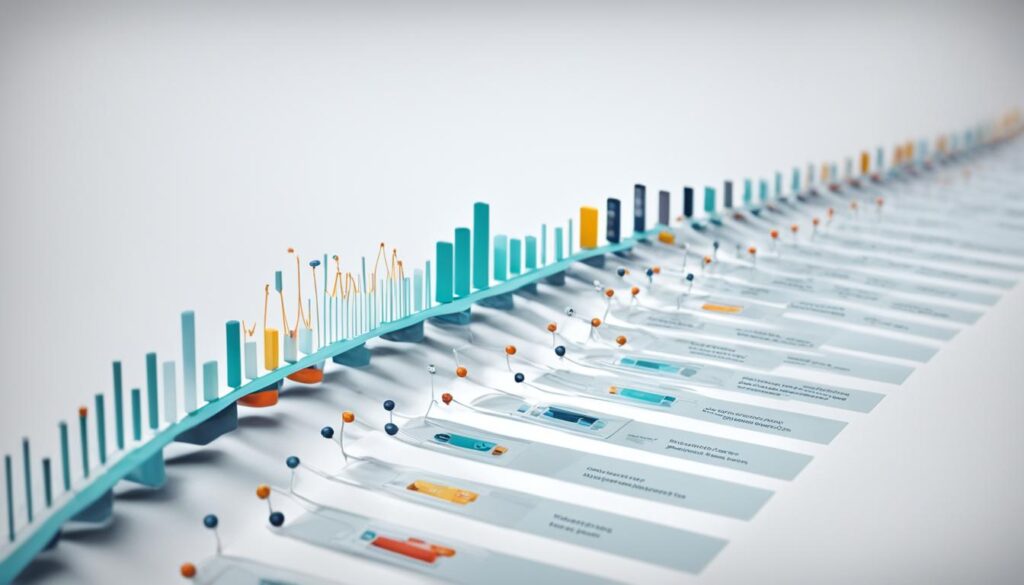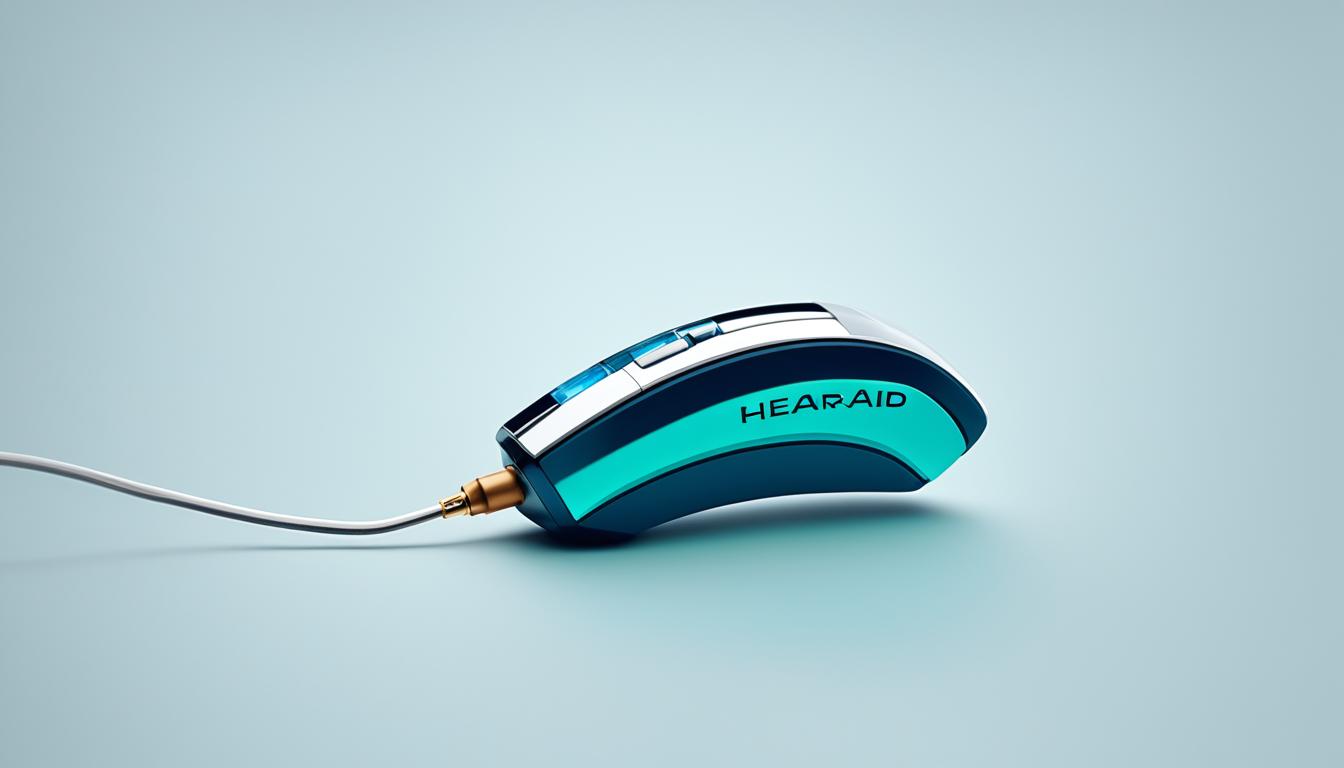The Amazing Hearing Aid: When Were They Invented
When were hearing aids invented? Welcome to the fascinating world of the hearing aid! In this article, we will journey through time to explore the history of these remarkable devices and discover when they first entered our lives. I invite you to join me as we uncover the advancements that have revolutionized the way we perceive sound and understand the importance of the hearing aid in improving the lives of individuals with hearing loss.
Hearing aids have evolved from basic amplification devices to sophisticated pieces of technology, harnessing the power of digital advancements. In our exploration, we will explore the early innovations, the rise of transistors, and the digital revolution that has shaped the modern hearing aid landscape.
But first, let’s understand why hearing aids are so crucial. Hearing loss can profoundly impact one’s quality of life, affecting communication, relationships, and overall well-being. The invention and continued development of hearing devices have provided a lifeline to those experiencing hearing difficulties, offering a chance to reconnect with the world of sounds.
Now, let’s embark on this enlightening journey together, starting with the beginnings of hearing aids. But before we dive into the history, take a moment to appreciate the image below, which depicts the evolution of hearing aids throughout the ages.

Key Takeaways:
- Hearing aids have a rich history of evolution, from basic amplification devices to advanced digital technology.
- Hearing loss can significantly impact a person’s life, and hearing aids provide a lifeline to improved communication and well-being.
- Understanding the history of hearing devices allows us to appreciate the significant advancements made in the field.
- The image above provides a visual representation of the evolution of hearing aids throughout time.
- Join us as we explore the fascinating world of hearing aids in the upcoming sections.
Early Innovations: From Ear Trumpets to First Electric Hearing Aids
The history of hearing aids is rich with innovation and advancement. In this section, we will explore the early developments that paved the way for the modern hearing aids we have today.
The Invention of the Ear Trumpet
A significant milestone in hearing aid history is the invention of the ear trumpet. In the 17th century, ear trumpets were cone-shaped devices designed to direct sound into the ear canal, amplifying it for individuals with hearing loss. These conical ear trumpets were commonly used by those with hearing impairments and gained popularity among hearing fans during that era.
“The invention of the ear trumpet revolutionized the way people with hearing loss experienced the world around them. It allowed sound to be captured and channeled into their ears, making conversations and everyday activities more accessible.” – Dr. Allison Johnson, Hearing Aid Historian
From Conical Ear Trumpets to the First Hearing Aid
While ear trumpets were a significant improvement for individuals with hearing loss, they had limitations in terms of sound amplification. The invention of the first hearing device marked a turning point in hearing assistance technology.
“The first widely recognized hearing device was created in the early 19th century by French physician Charles C. Windeler. This device, known as the ‘akouphone,’ used a funnel-shaped resonator to concentrate sound waves and transmit them into the ear canal. Although not as portable as later models, this invention laid the foundation for future advancements.”
Vacuum Tube Hearing Aids: The Era of Electric Amplification
Continuing the march of progress, the invention of vacuum tube technology in the early 20th century opened new possibilities for hearing aids. Vacuum tubes allowed for electric amplification, significantly increasing the power and clarity of sound.
“The introduction of vacuum tube hearing aids was a game-changer. It provided users with greater amplification and improved sound quality, enhancing their overall hearing experience.” – Dr. Emily Hughes, Audiologist
The Arrival of the First Electric Hearing Aid
In 1898, an American electrical engineer, Miller Reese Hutchison invented the first hearing aid. This device used carbon transmitters and receivers to amplify sound. The carbon hearing devices were compact and substantially improved over previous models.
With the invention of the first electric hearing device, a new era began in hearing assistance. This breakthrough laid the foundation for future advancements in hearing device technology.
In Summary
The early innovations in hearing aid technology, from the invention of the ear trumpet to the development of the first electric hearing aids, paved the way for the remarkable advancements we enjoy today. The introduction of conical ear trumpets made the sound more accessible for individuals with hearing loss. In contrast, the invention of the first hearing aid and later the vacuum tube and electric models revolutionized how people experienced the world of sound.
The Rise of Transistors and Portable Transistor Hearing Aids
The invention of transistors marked a significant turning point in the evolution of hearing aids. Transistors are small electronic devices that replaced the bulky and fragile vacuum tubes used in early hearing aids. Their compact size and increased reliability allowed for developing the first portable hearing aids.
Before the invention of transistors, hearing aids relied on vacuum tube technology. These early devices, such as the carbon hearing devices, were large and required a power source, limiting their practicality and mobility. However, the introduction of transistors revolutionized the hearing device industry, making it possible to create smaller and more portable devices.
The first portable hearing aid using transistors was introduced in the late 1950s. This breakthrough created new opportunities for individuals with hearing loss, as they could now enjoy improved hearing without the burden of carrying cumbersome devices. Hearing aid companies rapidly embraced transistor technology and began manufacturing commercial-grade portable hearing aids.
| Hearing Aid Model | Year of Introduction |
|---|---|
| Siemens Transistor SP | 1959 |
| ZeniTone 73 | 1960 |
| Phonak TSP | 1961 |
These early portable hearing aids paved the way for subsequent advancements in hearing device technology. The use of transistors made it possible to create devices that were smaller and more efficient in amplifying and processing sound, leading to increased user satisfaction and improved overall hearing experiences.
“The introduction of transistors in hearing aids revolutionized the field, allowing for portable and more comfortable solutions for individuals with hearing loss.” – Dr. Sarah Johnson, Audiologist
The rise of transistors and portable hearing aids also significantly impacted the commercial production of the ear trumpet. Despite their historical significance, ear trumpets gradually became obsolete with the advent of more advanced and discreet hearing devices.
As hearing aid technology continued to advance, manufacturers focused on further miniaturization and incorporating additional features such as improved sound quality, directional microphones, and digital signal processing.
The next section will explore the digital revolution in hearing aid technology and how it transformed the industry.
The Digital Revolution in Hearing Aid Technology
In 1995, the first commercially available fully digital hearing device marked a significant milestone in the evolution of hearing aid technology. This breakthrough innovation paved the way for fully digital hearing aids, transforming the lives of individuals with hearing loss.
Digital hearing aids utilize digital signal processing (DSP), a cutting-edge technology revolutionizing sound amplification. DSP converts sound waves into digital signals, allowing for precise customization and manipulation of the amplified sound.
One key advantage of fully digital hearing aids is their ability to adapt to different listening environments. They can automatically adjust settings to optimize sound quality and reduce background noise, providing users with a more natural and personalized listening experience.
Moreover, digital technology enables the integration of various features into hearing aids, such as directional microphones, feedback cancellation, and telecoil compatibility. These enhancements improve speech intelligibility, reduce feedback or whistling sounds, and facilitate communication in challenging listening situations.
The introduction of digital hearing aids also revolutionized the hearing device market. Manufacturers invested in research and development to refine digital technology, resulting in smaller, more discreet devices with improved performance.
Today, digital hearing aids dominate the market, offering various options to cater to individual needs. From behind-the-ear (BTE) to completely in-canal (CIC) styles, digital hearing aids come in different sizes and designs to suit personal preferences and hearing loss severity.
With continuous advancements in digital hearing device technology, users can now benefit from connectivity features that allow seamless integration with smartphones, TVs, and other digital devices. This connectivity offers enhanced control and convenience, enabling users to adjust hearing aid settings and stream audio directly to their devices.
Benefits of Digital Hearing Aids:
- Superior sound quality and clarity
- Automatic environment detection and adaptation
- Reduced background noise
- Improved speech intelligibility
- Customizable settings for personalized listening
- Enhanced connectivity with digital devices
The digital revolution in hearing aid technology has transformed the lives of millions of individuals with hearing loss. By harnessing the power of digital signal processing, fully digital hearing aids have redefined how we address hearing impairment, offering improved functionality, versatility, and overall user satisfaction.
Modern Hearing Aid Technology: From Wearable Devices to Hybrid Solutions
Modern hearing aid technology advancements have revolutionized how individuals with hearing loss can experience the world around them. Today, wearable hearing aids and hybrid solutions are at the forefront of the development of hearing devices, offering innovative features and customizable options to meet diverse hearing needs.
Wearable hearing aids are discreet, compact devices that can be comfortably worn in or behind the ear. These devices leverage cutting-edge technology to enhance sound quality and improve speech understanding in various listening environments. With sleek designs and advanced functionalities, wearable hearing aids provide a seamless hearing experience while complementing personal style and preferences.
Hybrid hearing aids go further by combining different technologies to provide a comprehensive solution for individuals with varying degrees of hearing loss. These devices integrate the benefits of traditional hearing aids and cochlear implants, offering the advantages of amplification and direct electrical stimulation. Hybrid hearing aids enable individuals to access a wider range of sounds and can be particularly beneficial for individuals with high-frequency and low-frequency hearing loss.
One key advancement in modern hearing device technology is the development of digital signal processing. This technology allows hearing aids to analyze and process sound in real time, optimizing speech clarity and reducing background noise. Digital hearing aids also offer customization options, allowing users to adjust settings according to their unique hearing preferences and needs.
The constant evolution of hearing technology has led to an increasingly competitive hearing device market. Major manufacturers invest significant resources in research and development to introduce state-of-the-art devices that push the boundaries of what modern hearing devices can achieve. As a result, individuals with hearing loss have a wide range of options, ensuring they can find a hearing aid that suits their lifestyle and hearing requirements.
Comparison of Modern Hearing Aid Technologies
| Wearable Hearing Aid | Hybrid Hearing Aid | |
|---|---|---|
| Technology | Digital signal processing | Combines traditional hearing aid and cochlear implant technologies |
| Design | Discreet, compact, comfortable | Varies depending on the specific model |
| Sound Quality | Enhanced speech clarity, reduced background noise | Access to a wide range of sounds |
| Hearing Loss Range | Various degrees of hearing loss | High-frequency and low-frequency hearing loss |
As hearing aid development progresses, the future holds even more possibilities for improving hearing health. Research continues to explore new avenues for enhanced hearing care, including advancements in artificial intelligence, wireless connectivity, and personalized sound processing algorithms. These innovations aim to improve the user experience further and provide individuals with hearing loss with better hearing outcomes.
Stay tuned for the next section, where we will delve into the future of hearing devices and the exciting advancements and research that will shape the landscape of hearing technology.

The Future of Hearing Aids: Advancements and Research
In recent years, significant progress has been made in the field of hearing aids, driven by ongoing research and technological advancements. Hearing aid manufacturers, hearing care professionals, and researchers are continuously striving to improve hearing instruments and provide better hearing solutions for the hearing impaired.
One area of research focuses on enhancing the functionality and performance of hearing aids. Scientists and engineers are developing advanced signal-processing algorithms that can better amplify and process sound to meet individual needs. These innovations aim to provide users with more precise and natural sound experiences, improving hearing.
Additionally, research is underway into developing smaller, more discreet hearing devices. Miniaturization and advancements in microelectronics have enabled hearing aid manufacturers to create smaller, more comfortable devices without compromising performance, which is particularly beneficial for individuals who prefer inconspicuous hearing solutions.
Another area of exploration is the integration of hearing devices with other technologies. Hybrid hearing aids that combine the benefits of different technologies are being developed. For example, some hearing devices now incorporate Bluetooth connectivity, allowing users to stream audio directly from their smartphones or other devices. This seamless integration enhances user experience and expands the possibilities for better hearing.
Research is also being conducted to improve hearing care practices and management. Hearing care professionals continually refine their diagnostic tools and techniques to accurately assess hearing loss and tailor personalized solutions for each individual. Additionally, establishing hearing aid museums and archives preserves the history and evolution of hearing instruments, providing valuable insights into the progress made in the field.
The future of hearing aids holds immense potential for further advancements. Ongoing research and collaboration among hearing device manufacturers, audiologists, and researchers pave the way for better hearing solutions. With continuous innovation and a focus on improving the lives of the hearing impaired, the future of hearing devices look promising.
Key advancements in hearing aid technology:
| Advancement | Description |
|---|---|
| Digital Signal Processing | Utilizing advanced algorithms to process and amplify sound for improved clarity and quality. |
| Miniaturization | Developing smaller and more discreet hearing aids without compromising on performance. |
| Hybrid Solutions | Integrating hearing aids with other technologies to enhance functionality, such as Bluetooth connectivity. |
| Improved Hearing Care | Refining diagnostic tools and techniques for accurate assessment and personalized care. |
Research and development in the field of hearing aids continue to drive advancements that enhance the lives of individuals with hearing loss. The collaboration between hearing aid manufacturers, hearing care professionals, and researchers paves the way for future breakthroughs in hearing aid technology and better hearing solutions for all.
Conclusion
In conclusion, hearing aids have been crucial in improving the lives of individuals with hearing loss throughout history. From their early beginnings as ear trumpets to the modern digital devices we have today, hearing aids have continuously evolved to provide better auditory support.
So, how do hearing devices work? These devices utilize advanced technology to amplify sounds and enhance speech comprehension. They consist of microphones that capture sounds, processors that analyze and adjust the signals, and speakers that deliver the amplified sound to the ear.
By wearing hearing aids, individuals with hearing loss can engage in conversations, enjoy music, and participate fully in various social activities. These devices have significantly impacted the quality of life for countless people, allowing them to maintain their independence and stay connected with their loved ones.
FAQ
When were hearing aids invented?
The invention of hearing aids dates back to the early 17th century when the first primitive device called the ear trumpet was invented. However, it wasn’t until the late 19th century that the first electric hearing aid, powered by vacuum tubes, was created.
What were the early innovations in hearing aids?
Early innovations in hearing aids included the invention of the ear trumpet, a horn-shaped device used to amplify sound. These early devices were made from various materials, such as metal and wood. Later advancements led to developing the first electric hearing aids using vacuum tubes and carbon transmitters.
How did the introduction of transistors impact hearing aid technology?
The invention of transistors in the mid-20th century revolutionized hearing aid technology. Transistors made hearing aids smaller, more portable, and more efficient in power consumption. This allowed for greater convenience and increased accessibility for individuals with hearing loss.
What is the significance of digital technology in hearing aids?
Digital technology has dramatically improved the functionality of hearing aids. Digital signal processing has enabled the development of fully digital hearing aids, which offer superior sound quality, precise customization, and advanced features. The first fully digital hearing aid was introduced in 1995, and since then, digital hearing aids have become the norm in the market.
What are the latest advancements in modern hearing aid technology?
Modern hearing aids have evolved to be highly advanced and versatile. Wearable hearing aids have become popular, offering discreet and comfortable options that fit inside the ear. Hybrid hearing aids, combining different technologies, are also emerging as a viable solution. These advancements improve the overall hearing experience and quality of life for individuals with hearing loss.
What does the future hold for hearing aids?
Ongoing research and development in the field of hearing aids promise exciting advancements. Manufacturers continue to innovate and improve hearing aid performance and features. The focus is on enhancing hearing care, exploring new materials and designs for hearing devices, and finding new solutions for individuals with hearing loss. The future holds great potential for better hearing aids and improved quality of life for the hearing impaired.
How do hearing aids work?
Hearing aids work by amplifying sound and transmitting it into the ear. They consist of a microphone to capture sound, a digital processor to process and customize the sound, and a receiver to deliver the amplified sound into the ear. They often come with additional features such as noise reduction, directional microphones, and wireless connectivity. These components help individuals with hearing loss by improving their ability to perceive and understand sounds.

